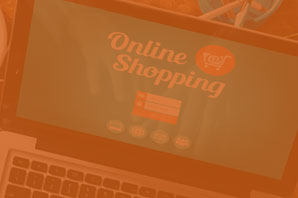There is a lot of customer relationship software (CRM) available to assist businesses with managing effective email marketing strategy. While these CRMs can definitely help you manage your email marketing, there are some important techniques that you should consider before you implement an email marketing strategy.
Segmentation
Segmentation is a process of separating potential or existing customers into clearly identifiable groups based on similar characteristics. This is really important to consider as you develop your email marketing strategy. It allows you to more specifically target your customers with offers and content that are relevant and valuable to them. Let’s look at some of the ways you can segment your email lists.
Demographic
For many marketers just starting out with an email marketing strategy, segmentation begins with demographics. The term demographics refers to a wide variety of attributes. Some examples of demographic information are age, ethnicity, gender, income level, education level, and family size. Professional demographics could include attributes such as industry, company type, company size, and position at a company. These types of information can tell you a lot about what people might find interesting or valuable, which helps you decide what content will be relevant to them.
Geographic
If your business serves a broad customer base that encompasses a large variety of demographics, segmenting by geographic area is a great technique for your email marketing strategy. This is particularly helpful for smaller businesses that serve specific local or regional areas.
Psychographic
For a more focused email marketing strategy, psychographic segmentation can be very helpful. For psychographic segmentation, you divide your audience into groups based on psychological attributes. Some example of psychological attributes are interests, lifestyle preferences, values, and personality traits. This type of segmentation is great for really narrowing down your groups, which allows you to focus your email marketing strategy very specifically.
Behavioral
If you think that a more specifically targeted campaigns are right for your email marketing strategy, behavioral segmentation is a good option. Behavioral segmentation is another highly focused type of segmentation based on audience behavior. With behavioral segmentation, you divide your consumers into groups based on specific behavioral patterns that they display while making purchasing decisions. Here are some examples of behavioral patterns that you could use to segment your audience for your email marketing strategy.
- Purchasing Behavior—This behavioral pattern relies on the complexity of the decision making process when a consumer is buying a product or service. For instance, a major purchase, such as buying a new car, is a complex purchasing behavior. Trying a new brand of laundry detergent, however, is more inconsequential.
- Timing—A lot of retailers base email marketing strategy on the timing or occasion of a consumer’s buying habits. For instance, you could send emails based on the closest holiday. The holiday season leading up to New Year’s Eve, for example, tends to be a time during which consumers consistently make more purchases.
- Usage Rate—This particular behavioral pattern depends on the frequency at which a consumer buys a product or service. For example, someone who purchases your product frequently would be a higher level user. You could “reward” these customers with consistent offers via a customer loyality program. Middle level users are customers who purchase your products or service regularly but not frequently. This type of customer typically responds well to offers such as birthday coupons. Lastly, low level users are customers who have purchased your products or services but who are more likely to be one time buyers. This type of customer usually responds well to an offer of immediate value such as a first time customer discount.
Personalization
Personalize using customer data
Analytics tools allow you to collect a lot of information about your leads. You can use that data to personalize your emails.
A basic example of email personalization is using the recipient’s name as opposed to something general such as “Hi, Customer”. You can also use the recipient’s name in the subject line.
More advanced personalization techniques involve tailoring the content of the email based on the recipient’s data. This makes the email more relevant to each recipient, which increases the click through rate. For example, you can market a specific product based on the recipient’s purchase history. You can also personalize imagery within the body of your emails.
Personalize your branding
Many businesses send emails from generic accounts. These generic accounts might be something like “donotreply@mybusiness.com” or “info@mybusiness.com”. Using a personalized email address as the sender is far more effective. Furthermore, personalizing the signature in the body of the email is also a good idea. Instead signing the emails with something like “The My Business Team”, use your name or the name of one of your employees. These tactics create personalized communication from your brand to your audience. This kind of communication builds trust, credibility, as well as customer loyalty.
Automation
Email automation is a basic trigger and action system. When a user performs a specific action (the trigger), then the system sets that user up to receive a specific email or specific set of emails (the action). One of the best benefits of email marketing automation is that you only have to set up the email once. After you’ve set up the email marketing campaign, the emails will automatically be sent to any user who meets the defined trigger.
There are a lot of benefits to email automation for your overall email marketing strategy. Essentially, you can automate your email campaigns for any trigger, and you’re only limited by your own creativity. Here are a couple of basic types of email marketing campaigns that you can automate.
Lead Nurturing Campaigns
The goal of lead nurturing campaigns is to drive people into your inbound sales funnels. These sales funnels are designed to keep people engaged with your business. Here are some of the basic tactics for creating a good lead nurturing email marketing campaign.
- Define audience—Most companies have more than one type of customer. That means that you need to market differently to your different customer types. The first step is to define the characteristics of the customer type that you want to target with your lead nurturing campaign.
- Offer something of value—A big part of a lead nurturing campaign is the nurturing. This might seem obvious. However, a lot of businesses just use their email marketing campaigns to send sales pitches. First, you need to nurture your recipients down your sales funnel. This makes them readier to convert into customers. Offer something of value first. This could be informative articles, ebooks, or other types of content.
- Establish goals—You need to plan your lead nurturing campaigns from start to finish before you implement them. If you don’t know your goals, then you will have a much more difficult time trying to figure out the type of content you should send. This organizational effort doesn’t need to be fancy. You can just create a basic chart.
- Determine timelines—You don’t want to bombard your audience with too frequent emails. That feels spammy. Instead, you should space your emails out on a timeline that corresponds to the usual length of your sales cycle.
- Evaluate results and optimize—Don’t forget to experiment and analyze your lead nurturing campaigns as you’re running them. Testing variants helps you optimize your approach.
Personalized Communication
Email automation software makes it super easy to personalize your communications. Simple elements, such as using a recipient’s name in the subject line, can make a huge difference in your open rate. Unlike other forms of digital marketing, email marketing is direct, one on one communication with your audience. Personalizing the emails definitely increases the open rates.
You can also use the recipient’s name in the email for an additional personal touch. When considering the content of the email itself, use a more casual tone. Think of it as if you were writing an email to a friend. This email marketing strategy is great for creating the feeling that you company is personable and approachable.
Final Thoughts
Email marketing is one of the oldest digital marketing approaches. However, it’s also still one of the best methods for forming and maintaining customer relationships. A lot goes into developing a strong email marketing strategy. From choosing a software to manage your email marketing campaigns to developing individual email marketing campaigns, there are a lot of decisions to be made. If you need help, a digital marketing agency can develop an email marketing strategy that works with your overall digital marketing strategy.





